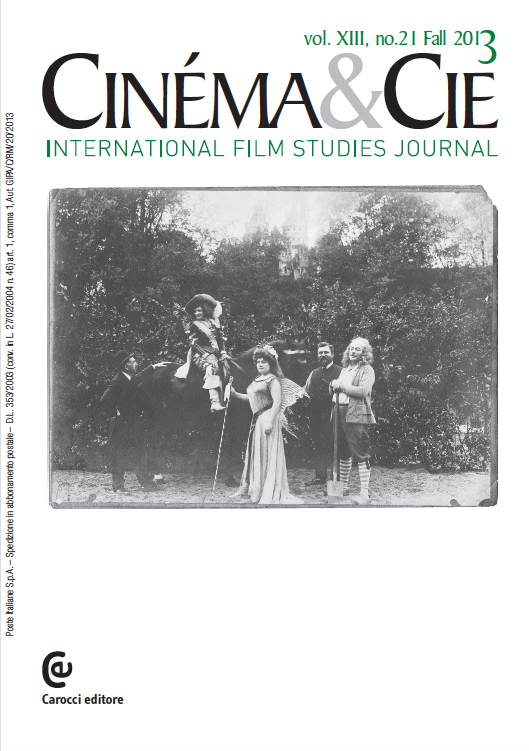Filmer le théâtre comme un sujet de cinéma: le point de vue du spectateur dans Max joue le drame (Pathé 1914)
Abstract
The principal interest of the Pathé comic film "Max joue le drame" (Max Plays at Drama, 1914) lies in the direct way it confronts theatre and cinema in the early years of the 20th century. In the film, Max gives a theatrical performance on a private stage to his friends. A distinction between the diegetic point of view of the theatre spectators and that of the film viewers is clearly established. By making techniques of distancing (in time and space), shifting and contrast its subject, the theatre is reshaped in various ways and takes on a whole new aspect. This re-appropriation of the theatre by cinema is run through dynamically by a vector, Max Linder, whose central action and interaction with the theatre cast as a subject creates a point of view for the film viewer that is both inside and outside the film and in this way is truly cinematic. It thus becomes possible to propose the hypothesis that Pathé was contributing indirectly to the development of cinema as an institution by encouraging, through a mode of production which privileges characters typical of the cinema, the emergence of new points of view for the viewer.






